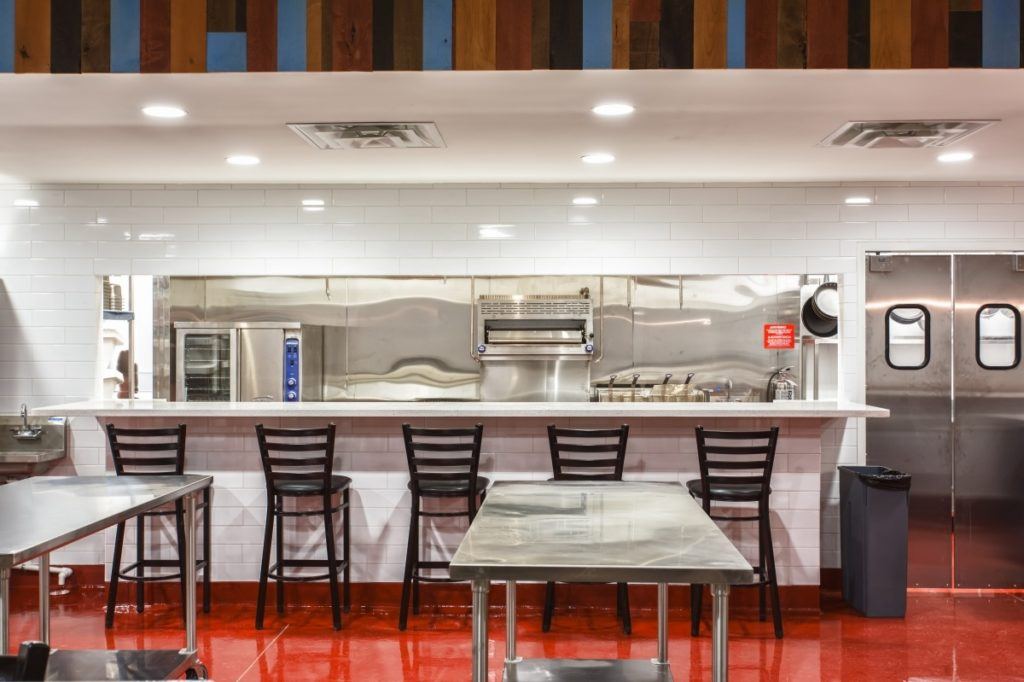Even before the COVID-19 pandemic hit the US in 2020, food delivery services had taken hold. The concept of ghost kitchens had also started to gain momentum pre-COVID, but now that we are nearly a year into the crisis, ghost kitchens are becoming commonplace.
Ghost kitchens are unassuming licensed kitchen spaces used for virtual brands a/k/a brands that do not have a brick-and-mortar space. Early adopters showed up in Los Angeles, where the already-much publicized Kitchen United resides alongside other kitchens created by delivery services themselves, like DoorDash.
For awhile, consumers had no idea their burger or burrito was coming from a non-descript kitchen share. However, consumers have begun to learn about them creating a new kind of buzz similar to that of food trucks a decade ago.
<<< Read: Comfort Food Trends Coming Out Of Ghost Kitchens >>>
And how could consumers not notice seeing how everyone’s brother is a food delivery driver (DoorDash claims 10,000 drivers sign up a week.) and ghost kitchens are popping up in other markets like Denver and Chicago, too? Plus, big brands like Dine Equity (IHOP and Applebees) are providing kitchen services to some virtual brands in metropolitan areas. If you’ve found yourself in a restaurant with a line of delivery drivers picking up at the same time you’re waiting for your breakfast, take note. Those aren’t all pancake orders they are grabbing.
Notice all the links above? That’s because there is a ton of press coverage and analysis on the subject of ghost kitchens and food delivery, which we won’t regurgitate. However, there are a few data points we’d like to share:
- From a June 2019 TechCrunch article: “Delivery is the fastest growing market in restaurants. What started out as 10 percent of your sales is now 30 percent of your sales, and [the industry predicts] it will be 50 to 60 percent of a quick-serve restaurant’s sales within the next three to five years.”
- From a November 2020 Roaming Hunger article: “…research shows working with a 3rd-party delivery system raises sales (on average) up to 20%.”
- From a June 2020 Restaurant Business Online article: “According to Technomic, sales via ghost restaurants from 300 facilities in the United States will rise by a projected 25% each year for the next 5 years—an estimated $300 million in yearly sales.”
- From a November 2020 Eater.com article: “…[delivery-only concepts] could be a $1 trillion business by 2030.”

The Bottom Line On Ghost Kitchens
2021 data is murky given we are in a pandemic. With difficult labor conditions and a mountain of regulations to follow, the near-term growth of food delivery, especially for those brands operating out of ghost kitchens, seems inevitable. However, not everyone will be a winner.
It’s the local mom and pops who invested in brick and motor that will suffer the most. With a lot of bills to pay and staff to carry, if they can’t come up with a workable delivery menu, all bets are off.
The big national brands have the resources to get behind the new trend successfully, and most QSR is already set up to succeed. It’s also an advantage for entrepreneurs who are just starting out. Overhead is lower, experimentation is more forgiving, and marketing is easier. Sign up with three (or more) delivery services like Uber Eats, Postmates, and GrubHub, turn them on and off as needed, and you are in business.
Ghost Kitchen Advantages
- Simple startup
- Reduced labor
- Scaled-down menu
- Easier to price in a way that keeps delivery companies from taking all the profit
- Prepared add-ons (sauces, side salads, chips) mean an easy upsell
- Turnkey brand partnership opportunities abound. Many consultants specialize in helping get virtual kitchen brands off-the-ground, too.
Ghost Kitchen Disadvantages
- It’s risky uncharted territory
- Competition is fierce
- Reduced labor (yes, it’s an advantage and a disadvantage)
- Limited delivery radius
- Have to rely on delivery drivers to represent your brand
- Environmental considerations with so much to-go packaging waste and so many delivery cars on the road, etc.
The conversation is certainly not over. The ghost kitchens of today are going to look different than those of tomorrow. Who knows, maybe Food & Drink Resources will get in on the action, too?
Thanks for stopping by and reading the Food & Drink Resources blog. Here we talk about food trends, culinary innovation, and the work of our team.
